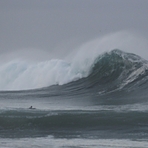
Low-resolution mapping missions single frame cameraĮxperimental camera in a short-lived program Large volume of imagery.įilm return with two reentry vehicles and two panoramic rotator cameras Single panoramic camera and a single return vehicle.įilm return with two reentry vehicles and two panoramic cameras.

Improved single panoramic camera (affording differing obits) : 63–64 and a single return vehicle. Each satellite carried a single panoramic camera and a single return vehicle.

#Corona weather the next 7 days series
This table lists government's designation of each type of satellite (C, C-prime, J-1, etc.), the resolution of the camera, and a description of the camera system.įirst series of American imaging spy satellites. īelow is a list of CORONA launches, as compiled by the United States Geological Survey. There were 144 CORONA satellites launched, of which 102 returned usable photographs. The "KH" naming system was first used in 1962 with KH-4, the earlier numbers being applied retroactively. The incrementing number indicated changes in the surveillance instrumentation, such as the change from single- panoramic to double-panoramic cameras. KH stood for " Key Hole" or "Keyhole" (Code number 1010), with the name being an analogy to the act of spying into a person's room by peering through their door's keyhole. The CORONA satellites were designated KH-1, KH-2, KH-3, KH-4, KH-4A and KH-4B. Two later versions of the Samos program, such as the E-5 and the E-6, used the bucket-return approach pioneered with CORONA, but neither of the latter Samos series were successful. The Samos E-1 and Samos E-2 satellite programs used this system, but they were not able to take very many pictures and then relay them to the ground stations each day. The image was then transmitted via telemetry to ground stations. This involved capturing an image on photographic film, developing the film aboard the satellite and then scanning the image electronically. That program included several types of satellite which used a different photographic method. Īn alternative concurrent program to the CORONA program was SAMOS. : 231 CORONA was complemented and ultimately succeeded by the higher resolution KH-7 Gambit and KH-8 Gambit 3 series of satellites. ĬORONA ultimately encompassed eight separate but overlapping series of satellites (dubbed "Keyhole" or KH ), launched from 1959 to 1972. The CORONA project was pushed forward rapidly following the shooting down of a U-2 spy plane over the Soviet Union on. The CORONA program was also used to produce maps and charts for the Department of Defense and other U.S. The primary goal of the program was to develop a film-return photographic satellite to replace the U-2 spyplane in surveilling the Sino-Soviet Bloc, determining the disposition and speed of production of Soviet missiles and long-range bombers assets. The WS-117L was based on recommendations and designs from the RAND Corporation.

Overview ĬORONA image of Pentagon, 25 September 1967ĬORONA started under the name "Discoverer" as part of the WS-117L satellite reconnaissance and protection program of the U.S.

Satellites were developed to photograph denied areas from space, provide information about Soviet missile capability and replace risky U-2 reconnaissance flights over Soviet territory. Eisenhower to authorize the Corona program, a top priority reconnaissance program managed jointly by the Air Force and the CIA. The unanticipated success of the mission precipitated the Sputnik Crisis, and prompted President Dwight D. However, the launch led to public concern in the West about the perceived technological gap between the United States and the Soviet Union. Officially, Sputnik was launched to correspond with the International Geophysical Year, a solar period that the International Council of Scientific Unions declared would be ideal for the launching of artificial satellites to study Earth and the solar system. In 1957, the Soviet Union launched Sputnik 1, the first artificial Earth satellite.


 0 kommentar(er)
0 kommentar(er)
